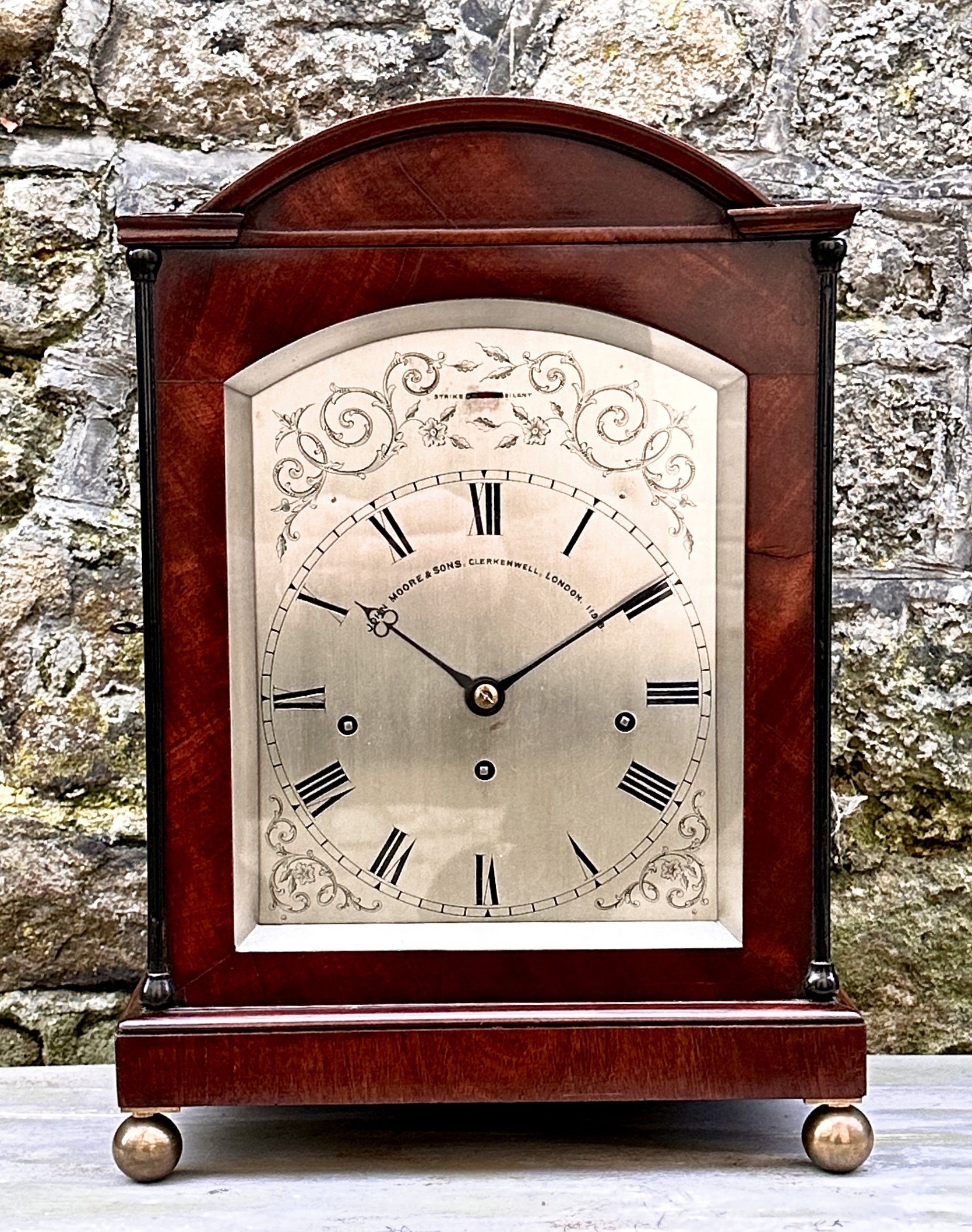A fine George IV mahogany bracket clock, the break-arched top with a cavetto moulded edge and bevelled viewing glass and with plain sides inset with bevelled glass, and with a door with arched glass and with slender ebonised three quarter columns to the corners over a simple moulded plinth base raised on gilt brass ball feet, to the silvered 7” dial with Roman numerals in black with outer chapter ring and blued steel hands, with finely engraved scrolling leaves and floral motifs above and at the corners below, with a strike/silent selection lever to the top and marked JOHN MOORE & SONS, CLERKENWELL, LONDON 11918, and with an eight day triple train quarter striking movement striking the quarters on a nest of eight bells and the hours on a further bell, and fitted with a platform escapement, inscribed to the backplate with the maker’s name, all behind a rear door with decorative pierced fret cutting lined with rose coloured silk. Supplied with door keys and winder. English, circa 1830.
Condition: Excellent, the clock is in very good condition with no damage to case or glass, the movement has been fully serviced and overhauled and is in excellent working order, the quarter strike has a lovely carillon of clear bells and overall the clock has a wonderful appearance, with it’s relatively simple but very elegant case, beautiful dial and pretty chimes. The clock is unusual in that it has a platform escapement instead of the usual pendulum.
The story of the firm of John Moore and Sons began in 1801 when John Moore entered into a partnership with Benjamin Handley who had premises at 38 Clerkenwell Close. Moore, who had been apprenticed to John Thwaites, became sole proprietor in 1820, expanding into the neighbouring building in 1824, and the firm had become known as John Moore & Sons by 1829, which it continued to be until 1887. Moore’s sons, Benjamin and Josiah had taken over the day to day running of the company by the 1850’s. Clocks made after this date were usually (but not exclusively) marked B. R. & J. Moore. The firm was known for making domestic clocks and turret clocks, which found their way into a number of churches and public buildings both in the United Kingdom as well as overseas, including the Apothecaries’ Hall (1821), York Minster (following a fire in 1840), the Ordnance Map Office, Southampton (1850), Magdalene College, Cambridge (1863), to name but a few. A publicity pamphlet from 1877 asserts, somewhat astonishingly, that the firm had made 15,180* domestic clocks to the January of that year, as well as listing a number of turret clocks they had made. The firm exhibited clocks at the Great Exhibition in 1851.
* It is conceivable that the firm began their numbering at 10,000, which makes the figure of just over 5,000 somewhat more plausible.
Dimensions:
Height = 42 cm (16.5”)
Width = 30 cm (12”)
Depth = 20 cm (8”)












